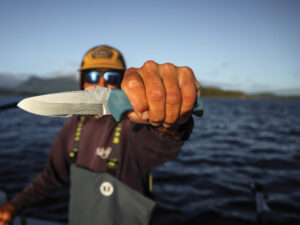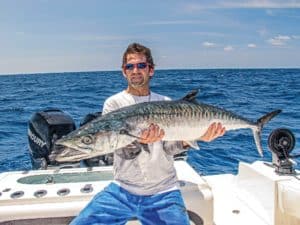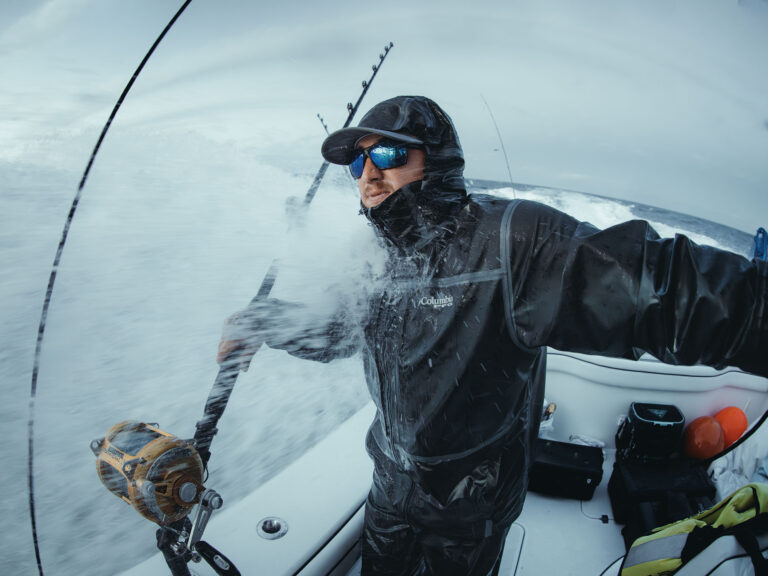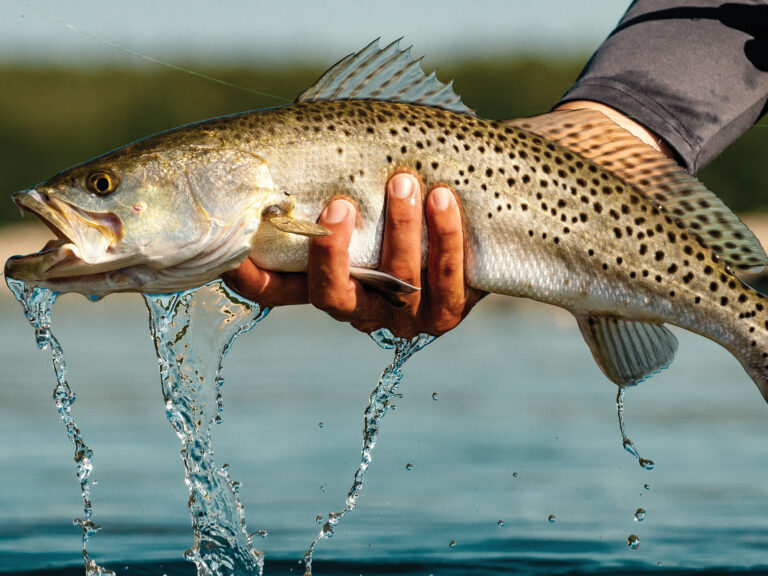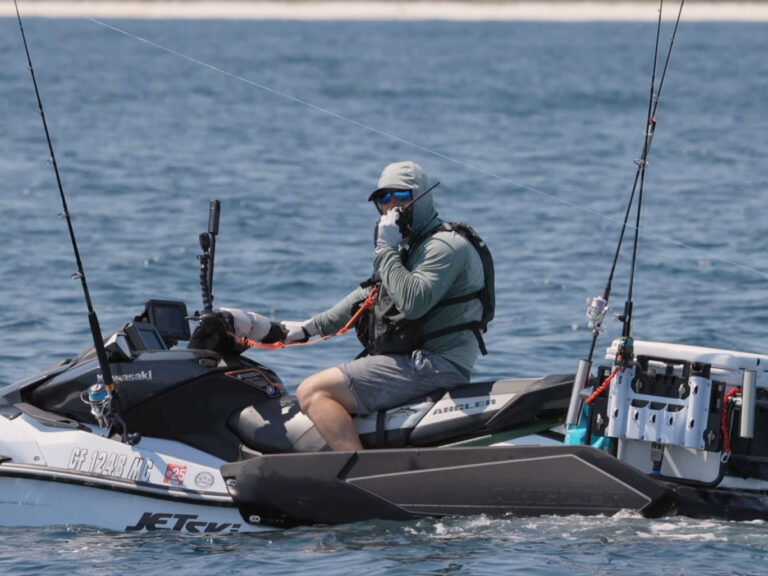
Stripping only the fly line off your reel that you plan to cast in a given situation decreases the likelihood of it snagging something, blowing overboard or creating frustrating snarls. But even if you own a boat designed with fly-fishing in mind—a flats skiff, for instance—you still need to fly-line-proof it to minimize preventable mishaps that result in missed opportunities and lost fish.
Clear the Deck
Although fly-fishing barefoot helps prevent you from stepping on loose line, managing fly line takes more than kicking off your footwear. Clearing the deck and cockpit of movable obstacles such as tackle bags, buckets, coolers and, say, the foul-weather gear that you shed once you finish that open-water crossing greatly reduces chances of some unruly loop of fly line catching or tangling.

Permanent fixtures such as cleats, latches and vertical rod racks are also primary fly-line catchers. And larger immovable objects such as pedestal seats, the leaning post or the center console (think steering wheel, throttle, fish finder, etc.) are occasional offenders. They don’t pose much of a problem—that is, until choppy seas force you off the forward casting deck and you fly-fish from inside the cockpit, closer to midship, or until you have a second fly angler on board who’s casting from the rear of the boat.
I carry a large beach blanket and drape it over my console, and I once fished with a guy who used a section of seine in the same manner. It really did the trick when we both fly-fished at the same time, one of us from the cockpit or the smaller rear casting deck.

If you have a bow-mounted trolling motor, you’re better off keeping it deployed (if the water is deep enough) when you fly-fish. Otherwise, drape a big towel over it, making sure it covers the entire head, shaft and lower unit with the propeller. Don’t forget to soak the towel first. It stays put much better when it’s wet and heavy. Another option is to install a quick-release mount that enables you to move the trolling motor—base or gator mount and all—off the bow just by pulling a pin.

Keep It Contained
There are a few commercially made fly-line management devices available, varying from specialized buckets that you strip the line into to mats that keep the fly line from sliding off the deck. Scientific Anglers recently introduced its Launch Pad, a silicone deck mat that helps keep loops of fly line under control. Carbon Marine offers a rubber mat and a more traditional bucket-style line container made of marine-grade materials.
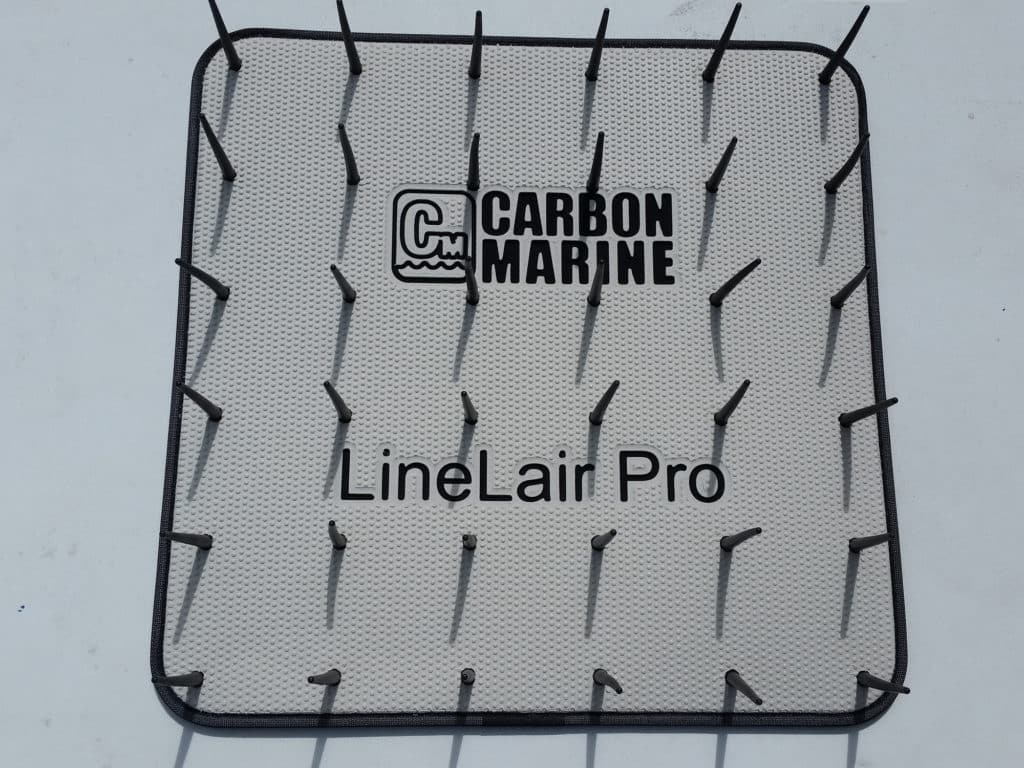
Accessories for fly-line containment can be pricey, but there are more-affordable options. For instance, instead of springing for one of the specialized mats, I discovered that stretching a wet towel on the deck helps keep the fly line pretty still. My first aluminum bass boat, which I used on the salt flats, was carpeted, and that carpet kept my line from sliding around fairly well. A fly-fishing buddy used to stow a 3-by-3-foot piece of shag carpet in his skiff to use as a stripping mat. It was purple, as I recall, and quite stylish (in the late ’70s).

If you’d rather not shell out a couple hundred bucks for one of the stripping buckets, a collapsible leaf barrel makes a suitable alternative. I bought one recently after my LineTamer, a $170 bucket made by a company no longer in business, jumped out of my skiff at 4 a.m. on Florida’s Turnpike. It’s made by Ryobi, available at Home Depot and other hardware and lawn-and-garden stores for under $20.
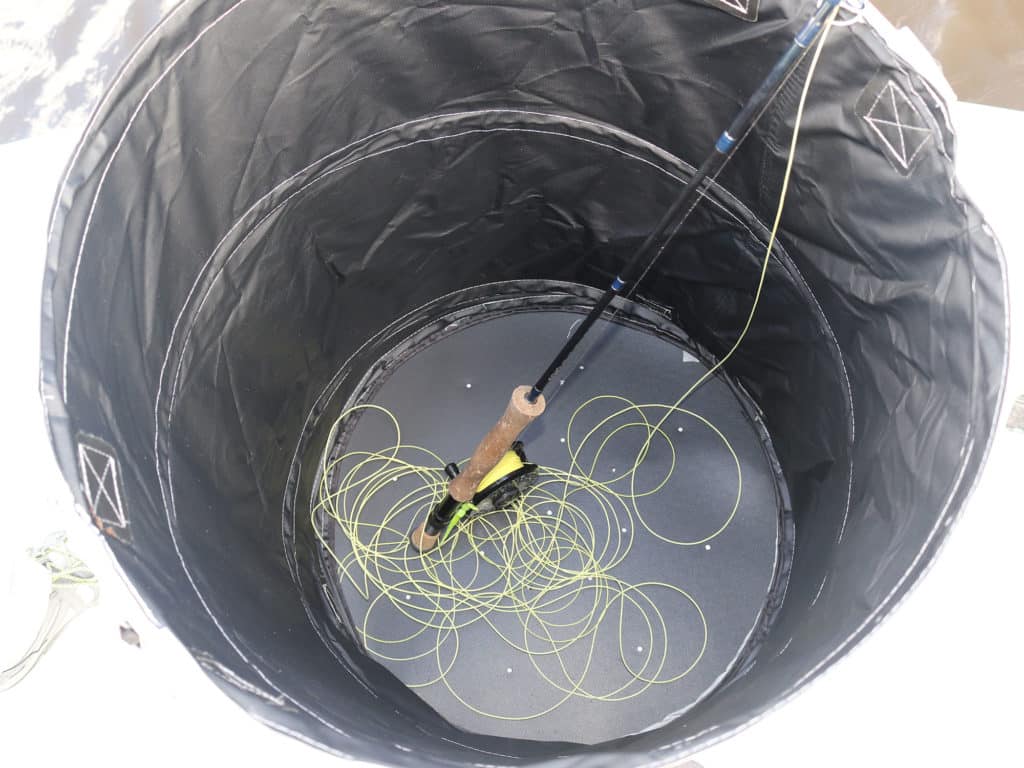
While not as snazzy as the specialty stripping buckets, the leaf barrel collapses into a disc only 4 inches thick. Once collapsed, it is small enough to stow in the bow hatch or a similar compartment.



